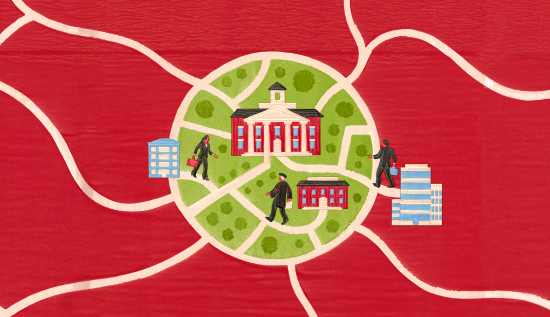Nationwide Wave of Change Coming to Role of College and University Presidents

The "Pathways to the University Presidency: The Future of Higher Education Leadership" explores varying pathways of college presidents. Study by Deloitte’s Center for Higher Education Excellence and Georgia Tech’s Center for 21st Century Universities
As higher education faces demographic and financial challenges in the decade ahead, the role and expectations of the college president are also undergoing substantial change, according to a new report by Deloitte’s Center for Higher Education Excellence and Georgia Tech’s Center for 21st Century Universities. The report, “Pathways to the University Presidency: The Future of Higher Education Leadership,” identified several key takeaways:
Varied Pathways: While the provost’s office has long been the most frequent stopover point on the way to the presidency, academic deans are increasingly moving right to the top job and bypassing the provost’s office altogether.
A New Role for the Provost: The provost is no longer simply regarded as the No. 2 person on campus. Rather, today’s provosts often have a set of skills that complement the president, rather than replicate them.
President as Fundraiser-In-Chief: Fundraising is essential from a president’s first day in office, according to the survey, and only grows in importance over time in the position. Despite the attention given to this issue over the past several years, preparing presidents to cultivate donors hasn’t improved much, if at all.
A Need for Formal Leadership Development: Investments in leadership often lag behind its importance to presidents. While nearly two-thirds of presidents said they had coaches or mentors to help them “prepare” for the role, only one-third of leaders indicated in the survey that they still receive coaching to “succeed” in the job.
Emphasis on Short-Term Wins at the Cost of Long-Term Planning: There is increasing pressure on presidents to look for quick wins. As a result, many are looking for the proverbial “low-hanging fruit” on their campuses where they can show fast results, not only for their own boards but also search committees for their next job.
“There is increasing pressure for presidents to learn on the job and find quick wins,” said Jeffrey J. Selingo, a visiting scholar at Georgia Tech’s Center for 21st Century Universities and one of the authors of the report. “Unless higher education creates more deliberate training programs for future leaders and helps align short-term tactics and long-term strategies, we’re likely to face a leadership crisis in the coming years.”
The report was compiled after a 10-month study that included the first-of-its-kind data mining of more than 800 curricula vitae (CVs) of sitting presidents of four-year institutions, in addition to an extensive survey of 150 presidents.
The report also highlights five ways college and university governing boards and stakeholder groups can improve the pipeline to their institution’s presidency:
- Develop intentional training and leadership development opportunities aimed at prospective college presidents.
- Align short-term tactics and long-term strategies.
- Promote better understanding of the role of presidents among search committees and a transition team to onboard the president.
- Embrace a willingness to look beyond traditional backgrounds.
- Build relationships with various stakeholders both on and off campus.
“Now is the time for colleges and universities to prepare for an upcoming wave of retirements,” said Cole Clark, executive director, higher education, Deloitte Consulting LLP and national director of higher education client relations. “Today’s and tomorrow’s colleges and universities need presidents with an even more diverse set of leadership skills and experience. Financial acumen, planning and fundraising are just a few areas of specialization necessary to effectively lead a college or university.”
The report methodology included three different aspects:
- Data mining: CV analysis in which data was collected on 840 presidents, gleaned from publicly available information on institutional websites and through other sources, such as professional networking sites.
- Survey: A survey sent via email to 1,031 presidents of four-year colleges and universities (16 percent response rate).
- Structured interviews: More than 24 in-depth interviews with current presidents and board of trustee members were conducted.
“The data mining aspect of this report is unique as we were able to uncover trends in how the traditional pathway to the college and university presidency is changing,” said Sonny Cheng, principal, Deloitte Consulting LLP and human capital leader, higher education. “While the provost’s office remains the most common launching pad for presidencies, there is evidence that many provosts no longer aspire to the top job, nor in some instances have the broad set of skills necessary for the changing demands of the president’s role.”